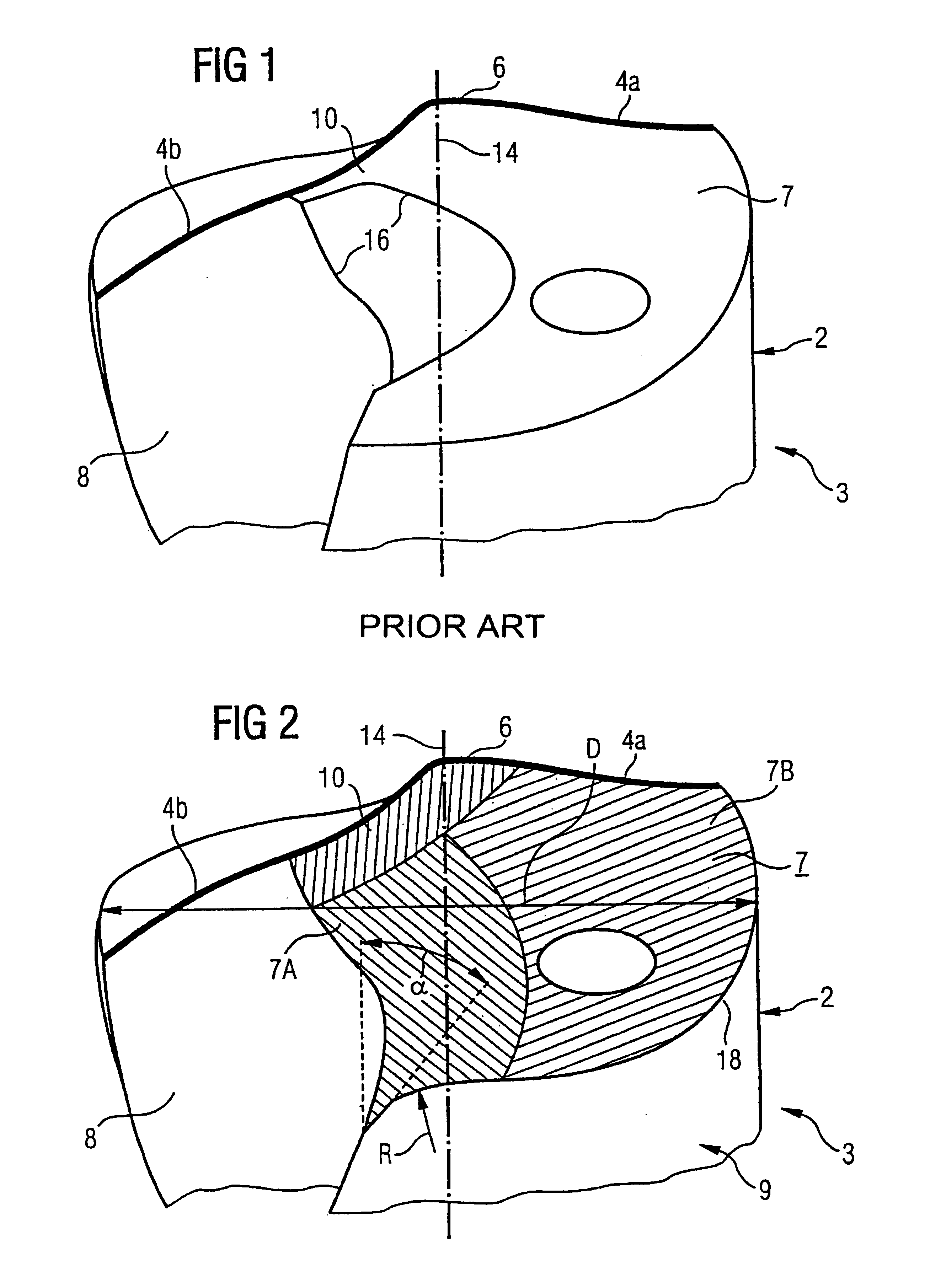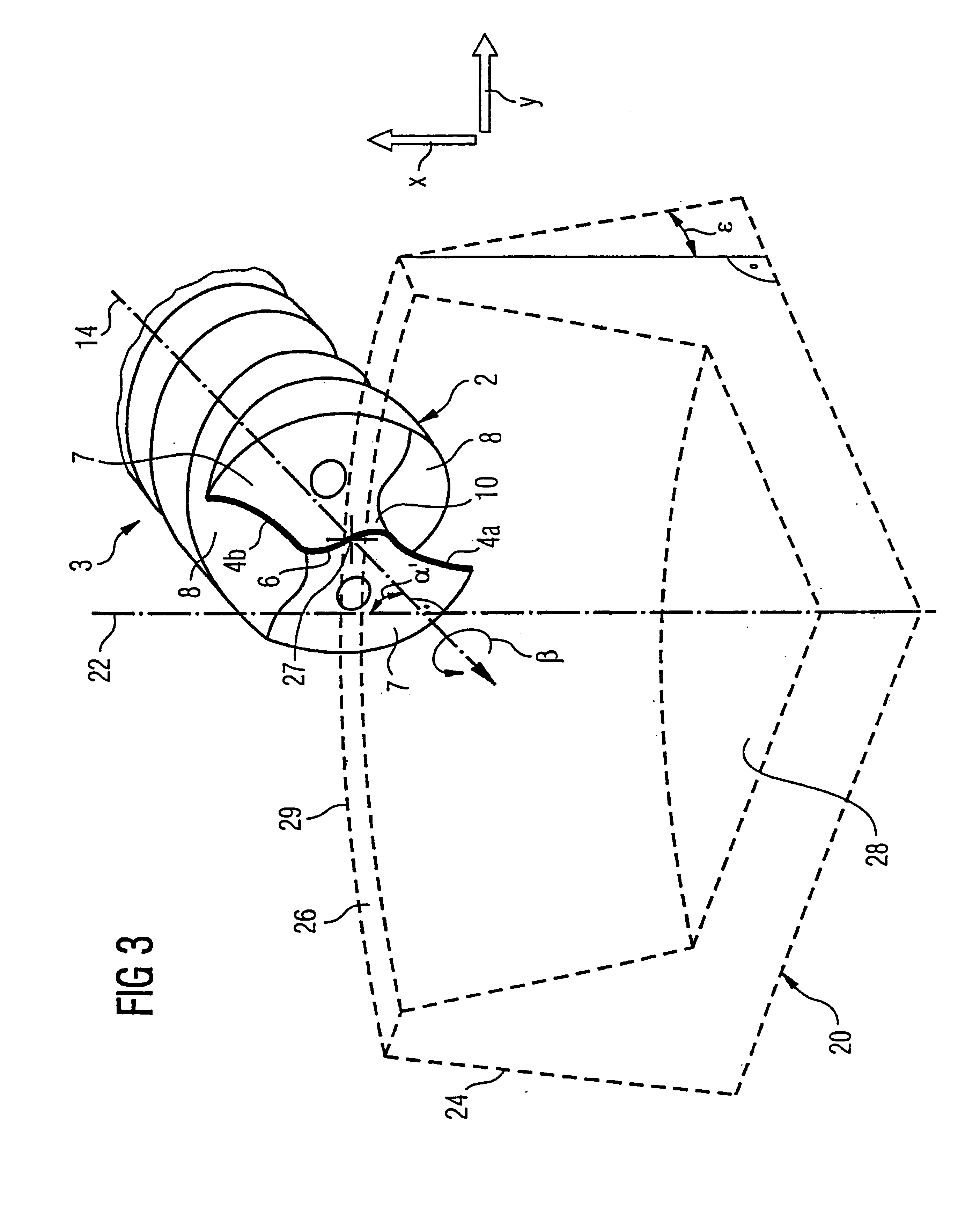Drill bit and method for grinding a drill bit
a drill bit and drill bit technology, applied in the direction of twist drills, manufacturing tools, wood boring tools, etc., can solve the problems of increasing the loading of the drill bit, and achieve the effect of keeping the mechanical load that occurs during drilling low
- Summary
- Abstract
- Description
- Claims
- Application Information
AI Technical Summary
Benefits of technology
Problems solved by technology
Method used
Image
Examples
Embodiment Construction
[0043]Equivalent parts in the figures are identified by the same reference numbers.
[0044]A drill bit 2 of a twist drill 3 that has been ground according to a method of the prior art (FIG. 1) and one that has been ground according to a method taught by an embodiment of the invention (FIG. 2) are contrasted in FIGS. 1 and 2. The drill bit 2 has two major cutting edges 4a, 4b, which are joined together via a roughly S-shaped chisel edge 6. The major cutting edges 4a, 4b and the chisel edge 6 are depicted in wider lines for purposes of illustration. The cutting edges formed by the major cutting edges 4a, 4b and chisel edge 6 extend over the entire drill bit 2. The drill bit 2 is designed to have mirror symmetry. The drill bit 2 is explained below with reference to one of the two mirror-image sides, starting from the major cutting edge 4a. Adjacent to it is a clearance face 7 that extends to a flute 8. The flute 8 begins in the drill bit 2 and runs in a spiral pattern in the flute area 9...
PUM
| Property | Measurement | Unit |
|---|---|---|
| pivot angle | aaaaa | aaaaa |
| pivot angle | aaaaa | aaaaa |
| rake angle | aaaaa | aaaaa |
Abstract
Description
Claims
Application Information
 Login to View More
Login to View More - R&D
- Intellectual Property
- Life Sciences
- Materials
- Tech Scout
- Unparalleled Data Quality
- Higher Quality Content
- 60% Fewer Hallucinations
Browse by: Latest US Patents, China's latest patents, Technical Efficacy Thesaurus, Application Domain, Technology Topic, Popular Technical Reports.
© 2025 PatSnap. All rights reserved.Legal|Privacy policy|Modern Slavery Act Transparency Statement|Sitemap|About US| Contact US: help@patsnap.com



